Feeding your cat the right diet is essential to their overall health and well-being. A well-balanced, nutritionally complete diet can extend your cat’s life, keep them energized, and prevent common feline diseases. With a variety of options available, understanding what your cat needs in their diet can be overwhelming. From wet food to dry kibble, homemade diets to raw food, this article will guide you through the best options to keep your cat happy and healthy.
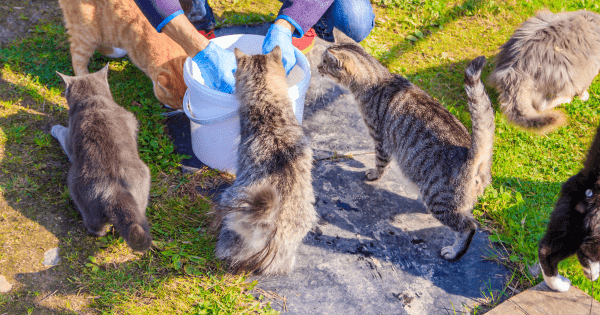
Understanding Your Cat’s Nutritional Needs
Cats are obligate carnivores, which means they require nutrients that are primarily found in animal products. Unlike omnivores, such as dogs and humans, cats cannot thrive on a plant-based diet. Their bodies are designed to digest and absorb nutrients from meat, which provides the essential proteins, vitamins, and minerals they need to stay healthy.
1. Protein
Protein is the most important component of a cat’s diet. Cats rely on animal protein to provide essential amino acids, particularly taurine, which is critical for heart function, vision, and reproductive health. Unlike humans or dogs, cats cannot produce sufficient taurine on their own and must obtain it from their diet. A diet deficient in protein or taurine can lead to serious health problems, such as heart disease or vision loss.
2. Fats
Fats, particularly omega-3 and omega-6 fatty acids, are another crucial part of a cat’s diet. These fats support a healthy coat and skin, contribute to brain function, and provide a concentrated source of energy. Cats are also unable to produce certain essential fatty acids, such as arachidonic acid, which must be obtained through animal-based fats in their food.
3. Vitamins and Minerals
Cats require a variety of vitamins and minerals to maintain optimal health. Some key nutrients include:
- Vitamin A: Supports vision and immune function.
- Vitamin D: Promotes calcium absorption for strong bones.
- Calcium and Phosphorus: Essential for bone health and muscle function.
- B Vitamins: Help with energy metabolism and red blood cell production.
A well-balanced cat food will include all of these nutrients, but it’s important to choose high-quality foods that meet your cat’s specific needs.
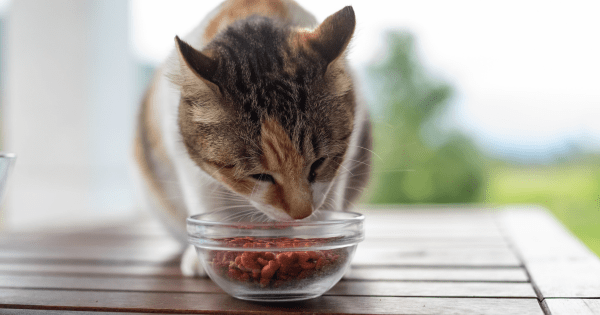
Wet Food vs. Dry Food: Which is Better?
One of the first decisions cat owners face is whether to feed their cat wet food, dry food, or a combination of both. Each option has its own benefits and drawbacks, and the best choice depends on your cat’s age, health, and dietary preferences.
1. Wet Food
Wet food, also known as canned food, contains a high percentage of moisture, which can be beneficial for cats, especially those that do not drink much water on their own. Hydration is particularly important for cats because they have a low thirst drive by nature, a trait inherited from their desert-dwelling ancestors.
Benefits of Wet Food:
- Increased Hydration: Wet food is made up of about 70-80% water, helping to keep your cat hydrated, which is crucial for kidney health and preventing urinary tract issues.
- High Protein Content: Wet food often contains higher levels of animal protein, making it more in line with a cat’s natural dietary needs.
- Easier to Eat: For older cats or those with dental issues, wet food is softer and easier to chew than dry kibble.
Drawbacks of Wet Food:
- Cost: Wet food is generally more expensive than dry kibble, especially if you’re feeding it exclusively.
- Spoilage: Wet food can spoil quickly if left out, and any uneaten portions should be refrigerated and used within a day or two.
2. Dry Food
Dry food, or kibble, is a convenient and cost-effective option for many cat owners. It’s easy to store, can be left out without spoiling, and typically has a longer shelf life than wet food.
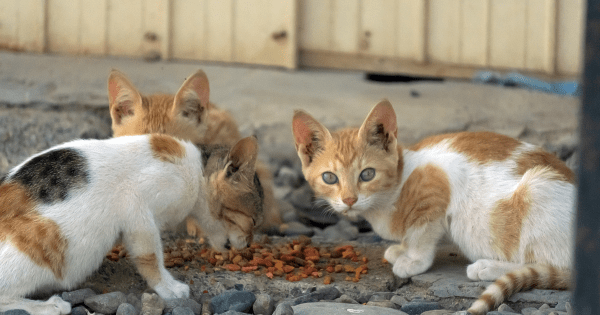
Benefits of Dry Food:
- Convenience: Dry food can be left out for your cat to graze on throughout the day, which is especially useful if you’re not home for regular feeding times.
- Cost-Effective: Kibble tends to be less expensive than wet food, making it a budget-friendly option.
- Dental Health: Some vets believe that the crunchiness of dry kibble helps reduce plaque buildup, although this benefit is debated.
Drawbacks of Dry Food:
- Low Moisture Content: Dry food contains only about 10% moisture, which may lead to dehydration if your cat isn’t drinking enough water.
- Lower Protein Content: Some dry foods contain more plant-based proteins, which are not as beneficial for cats as animal proteins.
3. Combining Wet and Dry Food
Many cat owners opt for a combination of wet and dry food to get the benefits of both. This approach allows you to provide the moisture and protein benefits of wet food while taking advantage of the convenience and cost savings of dry food. When feeding a combination diet, it’s important to ensure that both foods are nutritionally balanced and that you’re not overfeeding your cat.
Special Diets for Cats
In some cases, cats may require special diets due to health conditions or specific life stages. It’s important to consult with your vet if your cat has unique dietary needs or health concerns.
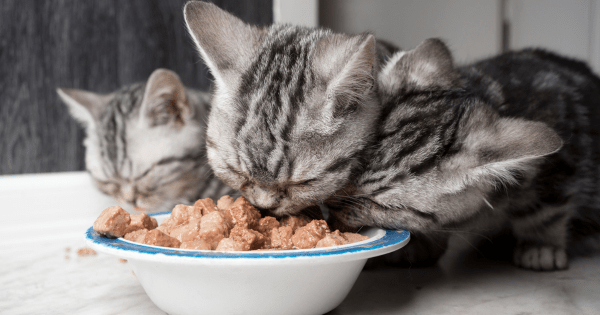
1. Kitten Food
Kittens have different nutritional needs than adult cats. They require higher levels of protein, fat, and certain vitamins and minerals to support their rapid growth and development. Kitten food is specifically formulated to meet these needs, so it’s important to feed them a diet designed for their life stage.
2. Senior Cat Food
As cats age, their metabolism slows down, and they may require fewer calories but more nutrients to maintain health. Senior cat foods are often lower in calories and contain added nutrients, such as joint-supporting glucosamine, to help manage age-related issues.
3. Weight Management Diets
Obesity is a common issue in domestic cats, and it can lead to serious health problems like diabetes, arthritis, and heart disease. If your cat is overweight, a weight management diet that is lower in calories and higher in fiber may be necessary. Your vet can help you choose the right food to promote healthy weight loss while ensuring your cat still receives all the necessary nutrients.
4. Prescription Diets
If your cat has a specific health condition, such as kidney disease, diabetes, or food allergies, your vet may recommend a prescription diet. These specialized foods are formulated to address the needs of cats with certain medical conditions. For example, cats with kidney disease may benefit from a low-protein diet to reduce the workload on their kidneys, while diabetic cats may require a diet low in carbohydrates to help regulate blood sugar levels.
Raw and Homemade Diets: Are They Safe?
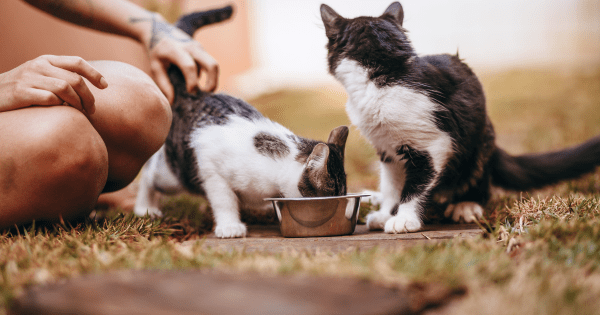
Raw food and homemade diets have gained popularity in recent years as some cat owners seek to mimic a cat’s natural diet in the wild. While these diets can provide a high level of protein and mimic a cat’s ancestral eating habits, they also come with certain risks.
1. Raw Diets
Raw diets typically consist of raw meat, bones, and organs, and are intended to replicate the natural diet of wild cats. Proponents of raw diets argue that they provide the most natural and biologically appropriate nutrition for cats. However, feeding a raw diet can be risky if not done correctly.
Risks of Raw Diets:
- Bacterial Contamination: Raw meat can carry harmful bacteria, such as Salmonella and E. coli, which can pose a health risk to both cats and their owners.
- Nutritional Imbalance: Without proper planning, raw diets may lack essential nutrients, such as calcium or taurine, which are critical to a cat’s health.
2. Homemade Diets
Homemade diets allow you to have full control over what your cat is eating, but they require careful planning to ensure nutritional balance. It’s easy to accidentally leave out essential vitamins or minerals, which could lead to deficiencies.
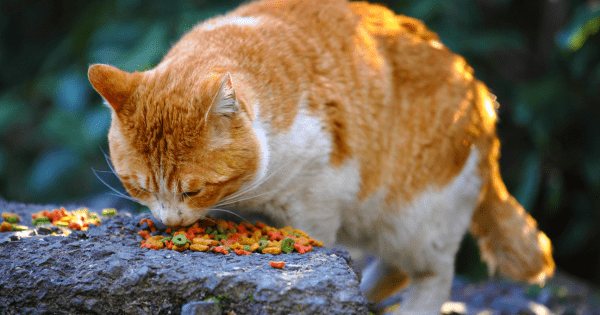
Tips for Homemade Diets:
- Consult with a Vet: Before switching to a homemade diet, it’s important to consult with your vet or a pet nutritionist to ensure the diet meets all of your cat’s nutritional needs.
- Use Supplements: Many homemade diets require supplements to ensure your cat is getting the right balance of nutrients, such as taurine and calcium.
How Much Should You Feed Your Cat?
Portion control is crucial for maintaining a healthy weight. Overfeeding can lead to obesity, while underfeeding can result in malnutrition. The amount of food your cat needs depends on factors such as their age, weight, activity level, and overall health.
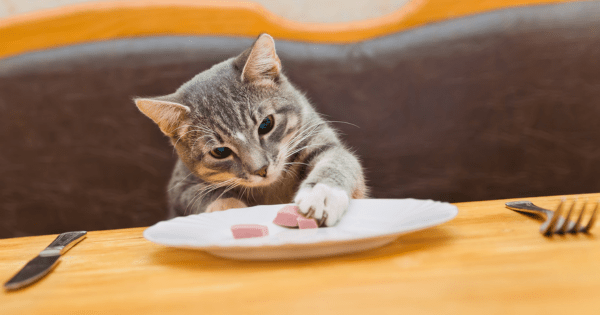
1. Follow Feeding Guidelines
Most commercial cat foods provide feeding guidelines based on your cat’s weight and age. Use these guidelines as a starting point, but be prepared to adjust based on your cat’s individual needs.
2. Monitor Weight and Health
Regularly monitor your cat’s weight and adjust their food intake as needed. If your cat is gaining or losing weight too quickly, consult your vet to make appropriate changes to their diet.
3. Use Portion Control
Avoid free-feeding, as it can lead to overeating and obesity. Instead, measure out your cat’s meals and feed them at regular intervals throughout the day.
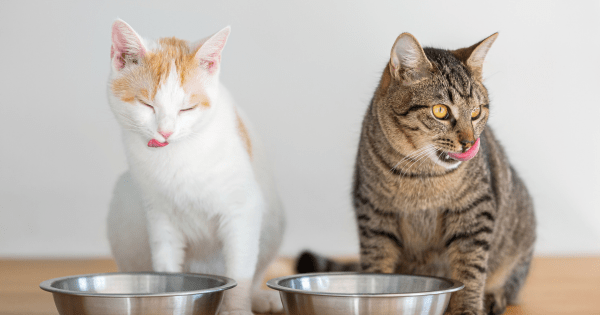
Choosing the best diet for your cat is one of the most important decisions you can make to ensure their long-term health and well-being. By understanding your cat’s nutritional needs, considering the benefits of wet vs. dry food, and addressing any special dietary requirements, you can provide your feline friend with a balanced, nutritious diet. Whether you opt for commercial food
READ NEXT: SHOULD FAMILIES WITH CHILDREN OWN A DOG?